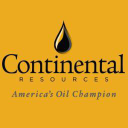Is There A Better Oil Industry Pick Than Continental Resources Stock?
The shares of Continental Resources (NYSE: CLR) and Marathon Oil (NYSE: MRO) currently trade 50% above pre-Covid levels observed in January 2020. Both companies are in the independent exploration and production business with operations in the U.S. and Africa. As the finances of oil companies depend on benchmark prices, the recent surge has been assisted by their strong domestic presence, a rising transportation demand, and the risk of economic sanctions on Russia. While Continental Resources has better historical revenue growth and higher operating margin, the company’s higher leverage poses a risk to the recent gains. In this article, Trefis highlights the financial and operating parameters of Marathon Oil that are comparable to Continental Resources, indicating MRO stock as a better pick over CLR. We compare a slew of factors such as historical revenue growth, returns, and valuation multiple in an interactive dashboard analysis, Marathon Oil vs. Continental Resources: Industry Competitors, But Marathon Oil Is A Better Bet
1. Revenue Growth
Continental Resources’ growth was much stronger than Marathon Oil before the pandemic, with CLR’s revenues expanding at an average rate of 31% from $2 billion in 2016 to $4.5 billion in 2019. Marathon Oil’s revenues observed an 11% average growth rate from $3.8 billion in 2016 to $5.2 billion in 2019. In 2020, Continental Resources and Marathon Oil reported a 43% and 41% topline contraction, respectively.
- Continental Resources major production areas, Bakken, SCOOP, STACK, and other regions, account for 53%, 32%, 13%, and 2% of total production, respectively. Moreover, Bakken and SCOOP regions account for 44% and 43% of the 1,103 MMBoe of the total proved reserves, respectively. In 2020, the company reported an average production rate of 300 MBoe/day.
- Marathon Oil’s key production regions, Eagle Ford, Bakken, Oklahoma, other U.S., and Africa account for 26%, 27%, 17%, 9%, and 20% of the total production, respectively. Moreover, the oil & gas fields in the U.S. and Africa account for 86% and 14% of the 972 MMBoe total proved reserves, respectively. In 2020, the company reported an average production rate of 383 MBoe/day.
- Marathon Oil has a more diverse geographic presence as opposed to Continental Resources, despite comparable annual production and total proved reserves. (related: Looking For Investment Income? This Stock Is A Better Alternative Over Exxon Mobil)
- What’s Next For UPS Stock After A Dismal Q2?
- What’s Next For Textron Stock After A 5% Fall In A Week?
- Should You Pick RTX Corp Stock At $125 After 10% Gains In A Week?
- Down 23% This Year, Will Starbucks’ Stock Recover Following Q3 Results?
- Down 14% YTD, What Lies Ahead For McDonald’s Stock Following Q2 Earnings?
- Meta Platforms Stock Is Up Twice As Much As S&P500, What To Expect From Q2 Results?
2. Returns (Profits)
Comparison of cash generation capabilities highlights the profitability of both companies as oil & gas firms re-invest a sizable share of their operating cash flow to develop new wells to continue generating returns. In 2019, Continental Resources generated $3 billion of operating cash from $4.6 billion in total revenues – implying an operating cash flow margin of 69%. Whereas, Marathon Oil reported $5.2 billion in total revenues and $2.7 billion of operating cash flow resulting in a margin of 53%.
- Historically, Continental Resources has reported better cash generation capabilities than Marathon Oil – largely due to higher operating margins. Moreover, the year-to-date performance of Continental Resources has also been better than Marathon Oil.
- In 2019, CLR invested $2.8 billion in exploration & development and returned $210 million to shareholders in dividends and buybacks. Thus, dividend payouts account for 6.7% of the total cash from operations.
- In 2019, MRO utilized $2.5 billion in investing activities and returned $524 million through dividends and buybacks to shareholders.
- Both companies have been investing in new properties and developing existing resources in recent years. (related: Is First Solar Stock A Good Pick In A Post-Pandemic World?)
3. Risk
Continental Resources stock is a riskier pick from the perspective of financial leverage.
- Higher financial leverage coupled with continued revenue growth is a boon for generating surplus equity returns. However, interest expenses weigh on finances as revenues decline – limiting dividend payouts and capital expenses.
- In 2020, Continental Resources and Marathon Oil reported $5.4 billion and $5.5 billion of long-term debt, respectively. Moreover, Continental Resources and Marathon Oil reported $14 billion and $18 billion of total assets, respectively.
- Given a higher long-term debt to total assets ratio, Continental Resources stock has higher financial leverage.
What if you’re looking for a more balanced portfolio instead? Here’s a high-quality portfolio that’s beaten the market consistently since the end of 2016.
| Returns | Feb 2022 MTD [1] |
2022 YTD [1] |
2017-22 Total [2] |
| CLR Return | 7% | 24% | 8% |
| MRO Return | 11% | 31% | 24% |
| S&P 500 Return | 2% | -4% | 105% |
| Trefis MS Portfolio Return | 2% | -8% | 264% |
[1] Month-to-date and year-to-date as of 2/10/2022
[2] Cumulative total returns since the end of 2016
Invest with Trefis Market-Beating Portfolios
See all Trefis Price Estimates

